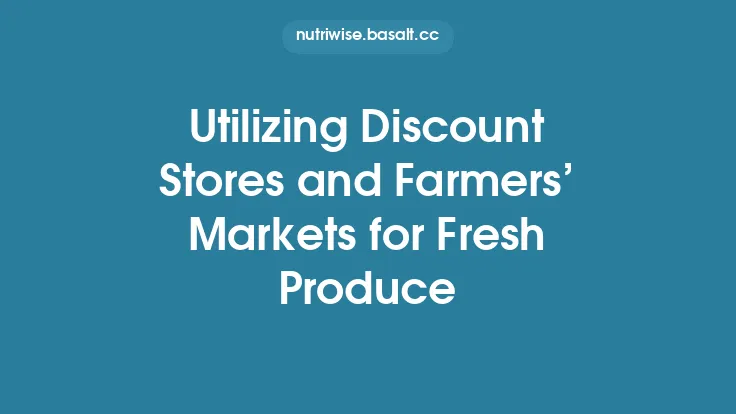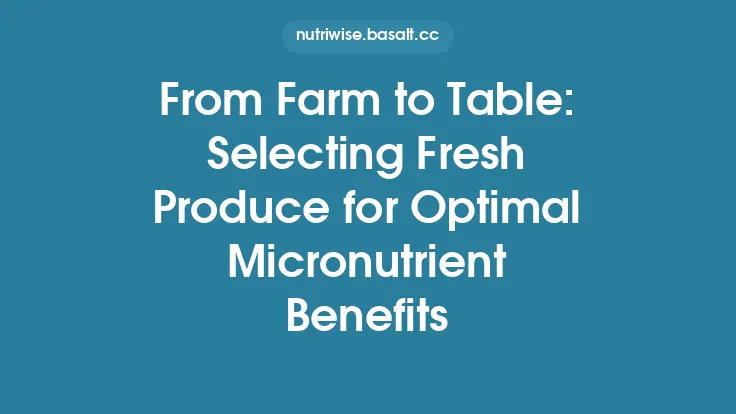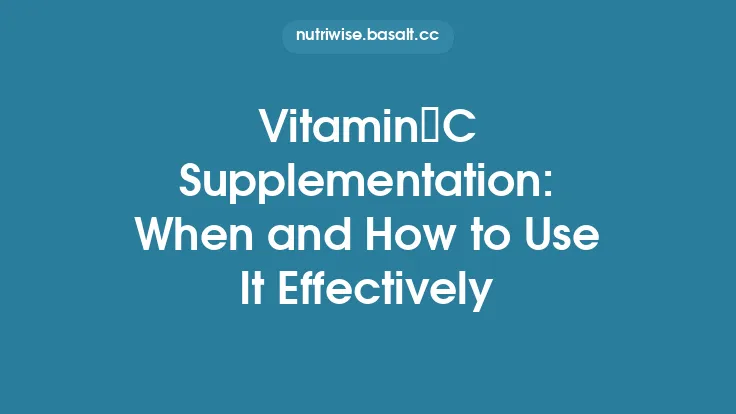Fresh produce is the cornerstone of a vibrant, healthy diet, yet it is also one of the most waste‑prone food groups in the modern kitchen. A single grocery trip can yield a bounty of fruits, vegetables, herbs, and sprouts, but without the right storage strategy, a significant portion can spoil before it ever reaches the plate. The good news is that proper storage is less about expensive gadgets and more about understanding the biology of each item, tailoring the environment to its needs, and adopting simple habits that keep waste—and plastic—at a minimum.
Understanding the Science of Freshness
Every piece of produce continues to respire after harvest, taking in oxygen and releasing carbon dioxide, water vapor, and, in many cases, ethylene—a plant hormone that accelerates ripening. The rate of respiration varies widely:
| Produce Type | Respiration Rate | Ethylene Production | Typical Shelf Life (optimal) |
|---|---|---|---|
| Leafy greens | High | Low | 3–7 days |
| Berries | High | Low | 2–5 days |
| Apples | Moderate | High | 4–6 weeks (refrigerated) |
| Tomatoes | Moderate | Moderate | 5–10 days (room temp) |
| Root veg. | Low | Low | 2–4 weeks (cool, dark) |
When respiration is too rapid—because of excess heat, humidity, or exposure to ethylene from neighboring items—cell walls break down, sugars ferment, and spoilage organisms proliferate. Conversely, overly dry conditions can cause dehydration, leading to wilting and loss of texture. The goal of storage, therefore, is to strike a balance: slow respiration enough to preserve quality, while maintaining enough moisture to prevent desiccation.
Sorting Produce by Ethylene Sensitivity
Ethylene is a double‑edged sword. Some fruits (e.g., bananas, avocados, tomatoes) emit it in large quantities, while others (e.g., leafy greens, carrots, strawberries) are highly sensitive and will ripen—or rot—more quickly when exposed. A practical first step is to separate ethylene producers from ethylene‑sensitive items.
- Create Two Zones
- Producer Zone: Keep bananas, avocados, mangoes, tomatoes, and melons together.
- Sensitive Zone: Store lettuce, spinach, broccoli, carrots, berries, and mushrooms away from the producer zone.
- Physical Barriers
- Use a simple cardboard divider in the refrigerator crisper drawer or a small reusable mesh basket to keep the zones distinct. This avoids the need for specialized containers while still providing a physical separation.
- Strategic Placement
- Position ethylene producers on the top shelf of the fridge (where airflow is strongest) and ethylene‑sensitive items on the lower shelves or in the crisper drawer, which typically has a more controlled humidity environment.
By compartmentalizing based on ethylene dynamics, you dramatically reduce the “ripple effect” where one overripe banana can cause a nearby lettuce head to wilt within days.
Optimizing Refrigerator Settings for Different Produce
Most modern refrigerators come with at least two crisper drawers, each with an adjustable humidity setting. Understanding how to use these controls can replace the need for plastic‑wrapped bags.
| Crisper Setting | Ideal for | Reason |
|---|---|---|
| High humidity (low vent) | Leafy greens, broccoli, carrots, herbs | Retains moisture, preventing wilting |
| Low humidity (high vent) | Apples, pears, mushrooms, onions | Allows excess moisture to escape, reducing mold risk |
Practical steps:
- Set the high‑humidity drawer for items that lose water quickly (e.g., kale, spinach). Add a damp (not wet) paper towel to the drawer to maintain a humid micro‑environment without creating a soggy mess.
- Set the low‑humidity drawer for produce that benefits from airflow (e.g., apples, mushrooms). A thin layer of shredded newspaper can absorb excess moisture while still allowing air circulation.
- Temperature consistency is key. Aim for 32–35 °F (0–2 °C) for most vegetables and 36–40 °F (2–4 °C) for fruits. Avoid frequent door openings, which cause temperature fluctuations and accelerate spoilage.
Using Natural Materials to Manage Moisture
Plastic bags are often marketed as “keep‑fresh,” but they trap moisture and can create a breeding ground for mold. Simple, low‑impact alternatives are readily available in most households:
- Unbleached paper towels or newspaper: Wrap delicate berries or leafy greens loosely. The paper absorbs excess moisture while allowing the produce to breathe.
- Cotton or linen produce bags: These reusable mesh bags are breathable, reduce plastic waste, and can be washed and reused indefinitely. They are especially effective for items like onions, garlic, and root vegetables.
- Perforated reusable bags: If you already own reusable grocery bags, punch a few small holes (or use a bag with built‑in ventilation) to improve airflow for items that need it.
- Wooden or bamboo trays: Placing produce on a slatted tray inside the fridge allows air to circulate underneath, preventing the “soggy bottom” effect that occurs when items sit in pooled moisture.
These natural materials are inexpensive, easy to clean, and eliminate the need for single‑use plastic liners.
Creating a Home “Cool Dark” Storage Space
Not all produce belongs in the refrigerator. Many fruits and vegetables keep longer when stored in a cool, dark, and well‑ventilated environment—think of a pantry, basement, or a dedicated “cool corner” in the kitchen.
Ideal candidates for cool‑dark storage:
- Potatoes, sweet potatoes, and winter squash
- Onions, shallots, and garlic
- Apples (if you prefer them crisp and not overly chilled)
- Cabbage and cauliflower
How to set up the space:
- Select a location that stays between 45–55 °F (7–13 °C) and is away from direct sunlight. A basement shelf, a pantry shelf near the floor, or a closet with a small vent works well.
- Use breathable containers such as wicker baskets, wooden crates, or perforated plastic bins (the latter can be reused from previous grocery trips). Avoid airtight containers that trap ethylene.
- Add a humidity buffer: A shallow tray of sand or peat moss can absorb excess moisture and keep the environment slightly humid, which is beneficial for potatoes and onions.
- Rotate regularly: Place newer items behind older ones and check weekly for signs of sprouting or soft spots.
By moving appropriate produce out of the fridge, you free up valuable refrigerator space for items that truly need the cold, while also reducing the overall energy consumption of your kitchen.
Extending Shelf Life with Simple Prep Techniques
Before storing, a few quick steps can dramatically extend the usable life of fresh produce without resorting to plastic wraps or chemical preservatives.
- Dry before storing: After washing, pat produce dry with a clean kitchen towel or spin in a salad‑spinner. Moisture on the surface is a primary catalyst for mold.
- Trim and separate: Remove any damaged or bruised leaves from greens, and separate wilted parts from the rest. Even a small spot of decay can spread quickly.
- Use a light coating of natural oil: For certain items like mushrooms, a very thin brush of olive oil can create a barrier that slows moisture loss. Use sparingly to avoid sogginess.
- Pre‑slice only what you’ll use soon: Whole fruits and vegetables retain moisture longer than cut pieces. If you must cut, store the pieces in a shallow container lined with a damp paper towel.
These low‑effort habits keep produce fresher longer and reduce the temptation to discard items that appear “old” but are still perfectly edible.
Monitoring and Rotating Stock to Prevent Waste
Even the best storage system fails if you lose track of what’s inside. A simple visual inventory can keep waste at bay.
- Label with dates: Use a reusable chalkboard label or a small piece of masking tape with a pen to note the purchase or “best‑by” date on each container or bag.
- Adopt the “first‑in, first‑out” rule: When you add new produce, place it behind older items. This visual cue reminds you to use the older stock first.
- Weekly “freshness check”: Set a recurring reminder to scan your fridge and pantry. Remove any items that show signs of spoilage, and consider repurposing them (e.g., overripe bananas for smoothies) before they become waste.
- Digital tracking: If you prefer a tech‑savvy approach, a simple spreadsheet or a free pantry‑management app can log quantities, dates, and suggested use‑by windows.
By staying aware of what you have, you avoid the common pitfall of “out‑of‑sight, out‑of‑mind” waste.
Practical Tips for Shopping and Transport
The storage journey begins at the market. Making mindful choices at the point of purchase reduces the burden on your fridge later.
- Buy in appropriate quantities: Purchase perishable items in amounts you can realistically consume within their optimal shelf life. For example, a small bunch of herbs or a single bag of berries rather than bulk.
- Choose produce with intact skins: Items with bruises, cuts, or soft spots are already on the road to spoilage. Opt for firm, unblemished produce.
- Transport in reusable bags: Use breathable cotton or mesh produce bags for the trip home. They keep the produce ventilated and eliminate the need for the plastic bags often provided by grocery stores.
- Cool down before refrigerating: If you’ve shopped on a hot day, let produce sit at room temperature for a short period (15–30 minutes) before placing it in the fridge. Sudden temperature changes can cause condensation, which accelerates spoilage.
These pre‑storage habits set the stage for a longer, waste‑free life for your fresh foods.
Frequently Overlooked Mistakes and How to Avoid Them
| Mistake | Why It Happens | Simple Fix |
|---|---|---|
| Storing tomatoes in the fridge | Belief that cold always preserves | Keep tomatoes at room temperature; only refrigerate once fully ripe and you need to extend a few days |
| Leaving herbs in water like cut flowers | Assumes it keeps them fresh | Wrap herbs loosely in a damp paper towel and store in a breathable bag; water can cause rot |
| Using the same drawer for all produce | Convenience | Separate high‑humidity and low‑humidity items using the crisper settings |
| Over‑washing before storage | Desire for cleanliness | Wash only when ready to use; excess moisture speeds decay |
| Neglecting to check for ethylene producers | Unawareness of ripening gas | Keep a mental list of common ethylene emitters and store them apart from sensitive items |
By recognizing and correcting these subtle errors, you can squeeze extra days—or even weeks—out of your produce without any additional cost.
Summary of Best Practices
- Know your produce: Identify respiration rates and ethylene behavior to guide storage decisions.
- Separate ethylene producers from sensitive items using simple physical barriers.
- Leverage refrigerator humidity controls: high‑humidity for leafy greens, low‑humidity for fruits and mushrooms.
- Replace plastic liners with breathable natural materials—paper towels, cotton bags, slatted trays.
- Create a cool‑dark zone for root vegetables, onions, and certain fruits, freeing fridge space.
- Prep wisely: dry, trim, and only cut what you’ll use soon.
- Track and rotate: label dates, practice first‑in‑first‑out, and perform weekly checks.
- Shop smart: buy appropriate quantities, choose intact produce, and transport in reusable bags.
- Avoid common pitfalls such as refrigerating tomatoes prematurely or over‑washing.
Implementing these strategies transforms your kitchen into a low‑waste, low‑plastic environment where fresh produce stays vibrant longer, your grocery budget stretches further, and the planet benefits from reduced food waste. The effort required is modest—mostly a shift in habit and a few inexpensive, reusable items—but the payoff is lasting, both for your meals and for the environment.





